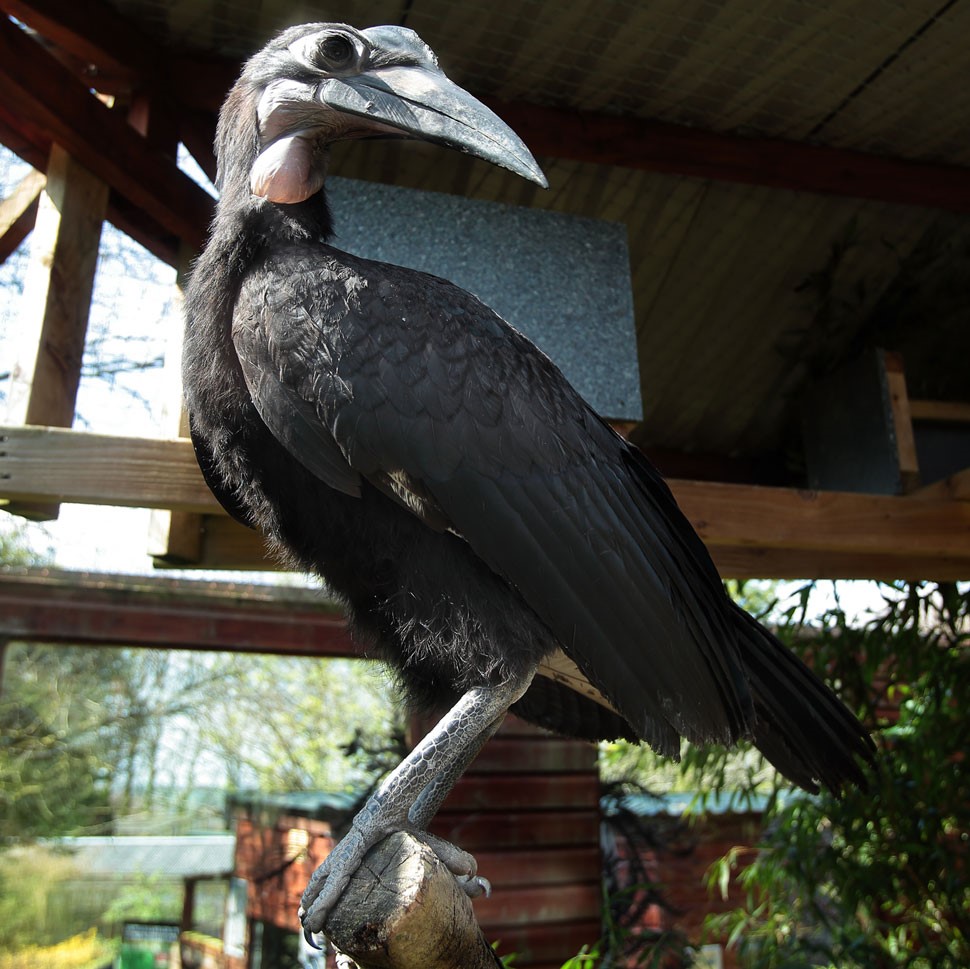Abyssinian ground hornbill
Bucorvus abysinnicus
IUCN Status: Least concern

Diet
These birds wander miles as a family group foraging for insects, snakes, other birds, amphibians and even tortoises. They will feed on carrion, as well as seeds, fruits and ground nuts.
Breeding
Cavity nest holes in fallen trees and rotting trunks with a good viewpoint (for safety) are selected and usually 1 offspring survives on average every 3-4 years!
At The Zoo
We have had a pair of these that have bred for the last 8 years or so. As far as we know this was the only pair of this species currently breeding in Europe at the time! “Brutus and Bronte” were both hand reared individuals and although we got fertile eggs from the pairing they did not make good parents despite being given chances to learn so we hand rear their young! Just recently we lost "Brutus" due to arthritic feet complications and we are searching for a new husband for "Bronte".
Habitat
Drier grasslands and savannah vegetation of Africa north of the equator.
Fun Facts
One of the longest living (40 plus years in the wild) and potentially slowest breeding species of birds known (in the wild once every 2-3 years). Ground hornbills have a throat pouch that can be blown up with air and released to make a booming call. In the northern species this is a distinctive blue pouch.
Behaviour
A ground dwelling species both these the Northern (or Abyssinian) and the Southern are the only species of hornbill that are terrestrial. Family units have territories that can extend anything from 2 – 100 square miles depending on the food resource.

